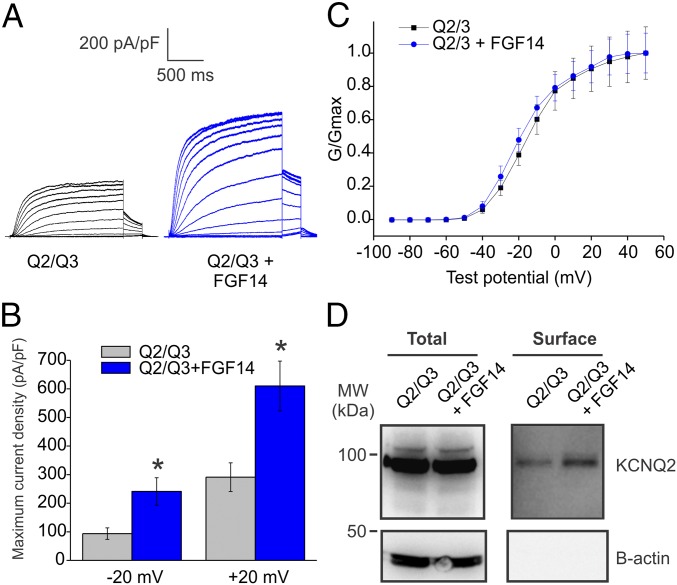Fig. 2.
FGF14 increases KCNQ2/3 current in a heterologous expression system. (A) Exemplar K+ currents from HEK cells transfected with KCNQ2 and KCNQ3 (Q2/Q3) only or with FGF14 added (Q2/Q3 + FGF14). Currents were elicited via a voltage-step protocol in whole-cell voltage clamp. K+ currents from cells transfected with FGF14 were larger than currents from control cells. (B) Maximum current densities from two different test voltages show that the presence of FGF14 promotes larger KCNQ2/3 currents (*P < 0.05, n = 11, Q2/Q3; n = 14, Q2/Q3 + FGF14). (C) The V1/2 for activation extracted from tail currents (Q2/Q3 = −17.83 ± 2.57 mV, Q2/Q3 + FGF14 = −21.24 ± 2.33 mV; P = 0.34) and slope factor (Q2/Q3 = 9.83 ± 0.46 mV, Q2/Q3 + FGF14 = 9.80 ± 0.74 mV; P = 0.98) were not significantly changed. (D) More KCNQ2 channels are present at the cell membrane when FGF14 is expressed, as revealed by surface biotinylation (representative experiment from three independent trials).

